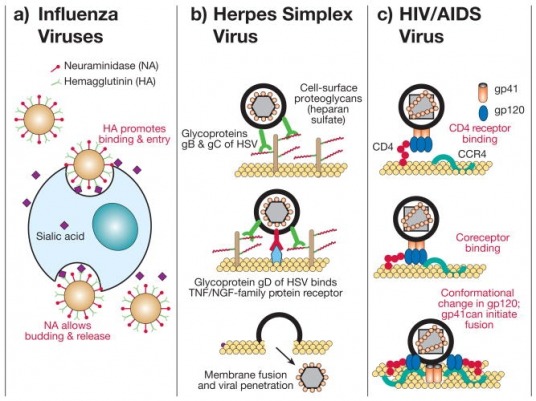Virology
Orthomyxoviridae
The causes of influenza or flu are two species of orthomyxoviruses, designated types A and B.
Morphology
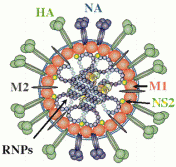
1. Pleomorphic (many-shaped) lipid envelope
2. Glycoprotein spikes - Hemagglutinin (HA)
- Neuraminidase (NA)
3. Ratio of HA to NA -5: 1
2. Glycoprotein spikes - Hemagglutinin (HA)
- Neuraminidase (NA)
3. Ratio of HA to NA -5: 1
Genome of influenza A & B virus
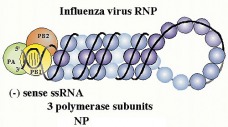
- Single-stranded (-) RNA in 8 segments
- 3 polymerase polypeptides with each segments
- 5’ and 3’ end of all segments are highly conserved
- 3 polymerase polypeptides with each segments
- 5’ and 3’ end of all segments are highly conserved
Pathogenesis
1. Transmission of disease is airborne. The viruses deposit in lower respiratory tract.
- HA spikes attach to pulmonary epithelia cells and trigger endocytosis.
- NA spikes provide the virus access to cell surfaces by hydrolyzing mucus in the lungs
2. Immunocompromised - elderly
- pre-term infants
3. Existing antibodies – Anti-HA AB
- IgA, IgG (it is produce when virus attack and IgG is a memory
antibody)
1. Transmission of disease is airborne. The viruses deposit in lower respiratory tract.
- HA spikes attach to pulmonary epithelia cells and trigger endocytosis.
- NA spikes provide the virus access to cell surfaces by hydrolyzing mucus in the lungs
2. Immunocompromised - elderly
- pre-term infants
3. Existing antibodies – Anti-HA AB
- IgA, IgG (it is produce when virus attack and IgG is a memory
antibody)
Laboratory diagnosis
Serology on the patient's serum can be performed or the viruses may be isolated in chick embryos if necessary.
Serology on the patient's serum can be performed or the viruses may be isolated in chick embryos if necessary.
Epidemiology

- All throughout the year
- Incubation (1-4 days)
- Epidemics usually last from 3-6 weeks and the highest attack rates are for 5-19 year old (generally Type A).
- Every winter, the recurring population susceptibility is due to changes in the surface antigens; major changes are referred to as antigenic shift. These changes are responsible for pandemics and they result from rearrangement of the viral genome segments. Minor changes are called antigenic drift and these are responsible for many epidemics. They result from mutation in the viral RNA. Antigenic drift occurs every 2-3 years while antigenic shift only occurs every 10 years.
- Neuraminidase (NA)
9 antigenic types, only NA 1, 2 occur in man
- Haemagglutinin (HA)
15 antigenic types, only HA 1, 2, 3 occur in man
- Incubation (1-4 days)
- Epidemics usually last from 3-6 weeks and the highest attack rates are for 5-19 year old (generally Type A).
- Every winter, the recurring population susceptibility is due to changes in the surface antigens; major changes are referred to as antigenic shift. These changes are responsible for pandemics and they result from rearrangement of the viral genome segments. Minor changes are called antigenic drift and these are responsible for many epidemics. They result from mutation in the viral RNA. Antigenic drift occurs every 2-3 years while antigenic shift only occurs every 10 years.
- Neuraminidase (NA)
9 antigenic types, only NA 1, 2 occur in man
- Haemagglutinin (HA)
15 antigenic types, only HA 1, 2, 3 occur in man
Antigen drift/shift
Antigenic drift refers to the accumulation of HA and NA mutations within a single strain of virus in a given geographic area. Therefore as a result of such relatively minor changes in the virus’s antogenicity, localized increases in the number of flu infections occur about every 2 years.
Antigenic shift is a major antigenic change resulting from the reassortment of genomes from different influenzavirus strains that occurs within the host cells. On average, antigenic shift occurs in influenza A every 10 years.
Antigenic drift refers to the accumulation of HA and NA mutations within a single strain of virus in a given geographic area. Therefore as a result of such relatively minor changes in the virus’s antogenicity, localized increases in the number of flu infections occur about every 2 years.
Antigenic shift is a major antigenic change resulting from the reassortment of genomes from different influenzavirus strains that occurs within the host cells. On average, antigenic shift occurs in influenza A every 10 years.
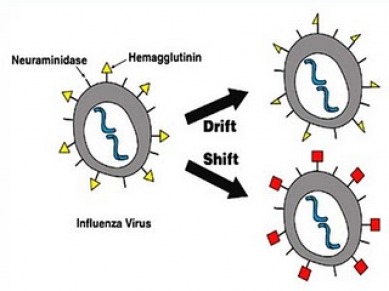
Antigenic Drift Antigenic Shift
• Minor change in genome
• Both in A & B
• Point mutation
• Result in new strain
• Happens all the time
Antigenic Shift
• Major change in genome
• Only in A
• Gene re-assortment
• Result in new subtype
• Happens occasionally
• Minor change in genome
• Both in A & B
• Point mutation
• Result in new strain
• Happens all the time
Antigenic Shift
• Major change in genome
• Only in A
• Gene re-assortment
• Result in new subtype
• Happens occasionally
Pandemic: the widespread occurrence of an infectious disease in many continents or the whole world.
Epidemic: the outbreak of an infectious disease that spread widely, but confined to a location.
Epidemic: the outbreak of an infectious disease that spread widely, but confined to a location.
Do you know how to name strains of influenza with its isolation place and subtypes?
| variants_are_identified_and_named_according_to_the.pptx |
Control
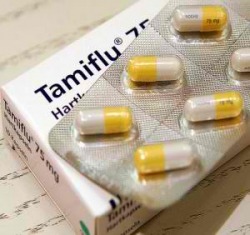
1. Inactivated influenza vaccine may be used for all health care personnel
2. Live, attenuated vaccine (LAIV) may be given to healthy adults less than 50 years of age who are not pregnant and who do not have contraindications to receiving the nasal vaccine. Health care personnel taking care of immunocompromised patients may receive LAIV.
3. Antiviral Chemoprophylaxis
Influenza antiviral chemoprophylaxis may be given to patients and healthcare personnel in accordance with current recommendations. Two FDA-approved influenza antiviral medications are recommended for use in the United States during the 2007-08 influenza season: oseltamivir (Tamiflu®) and zanamivir (Relenza®). Oseltamivir and zanamivir are chemically related antiviral medications known as neuraminidase inhibitors that have activity against both influenza A and B viruses.
2. Live, attenuated vaccine (LAIV) may be given to healthy adults less than 50 years of age who are not pregnant and who do not have contraindications to receiving the nasal vaccine. Health care personnel taking care of immunocompromised patients may receive LAIV.
3. Antiviral Chemoprophylaxis
Influenza antiviral chemoprophylaxis may be given to patients and healthcare personnel in accordance with current recommendations. Two FDA-approved influenza antiviral medications are recommended for use in the United States during the 2007-08 influenza season: oseltamivir (Tamiflu®) and zanamivir (Relenza®). Oseltamivir and zanamivir are chemically related antiviral medications known as neuraminidase inhibitors that have activity against both influenza A and B viruses.
